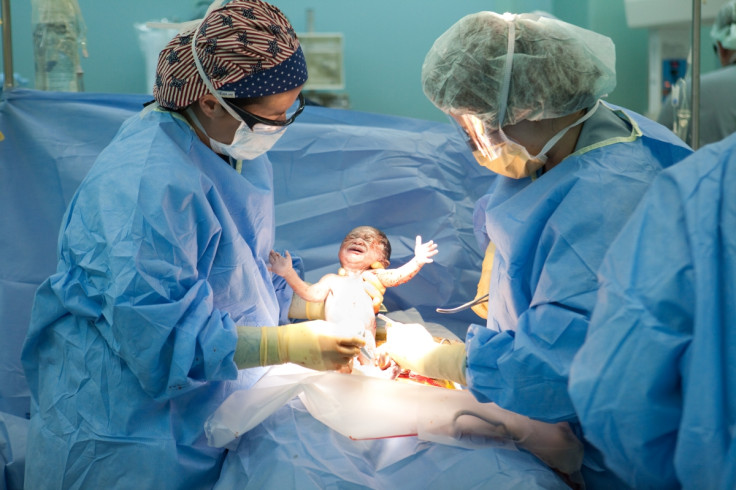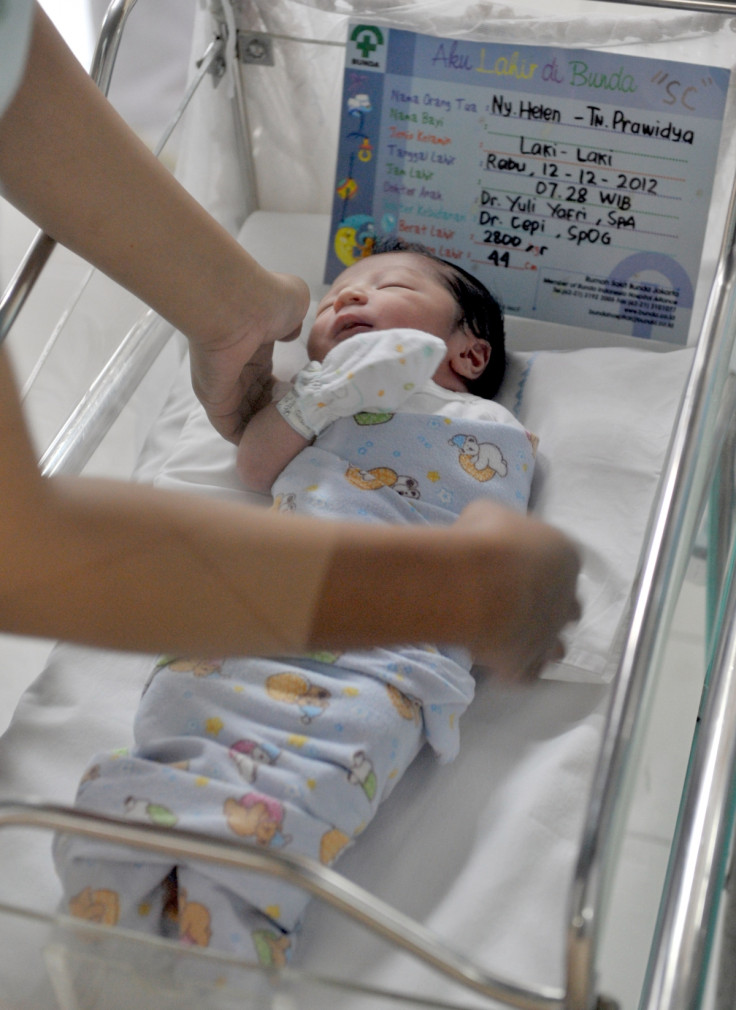Vaginal seeding: The bizarre practice of smearing vaginal fluids on C-section babies

'Vaginal seeding' is becoming more and more widespread in mothers who have given birth by caesarean section. As a means to – theoretically – improve their new-born baby's immune system, the craze is slowly overtaking placenta-eating as the most obscure post-birth ritual.
What is it?
The practice involves taking swabs of the inside of the mother's vagina, and then wiping that swab – and subsequent vaginal fluid – over the face, body and inside of the mouth of the baby.
Granted it is not for everyone, but some mothers believe this will allow the baby to come into contact with the bacteria that they would usually brush past in the birth canal. The theory suggests that their brand new immune system will begin to fight off these easy-to-beat bacteria, setting them up for a life preventing disease.
Experiencing the birth canal is a very unique part of a new-born's life, and it has even been described as its own microbiome – an environment so rich in microorganisms and bacteria that it deserves its own title. Hence, some mothers want their baby's to encounter this phenomenon for themselves. "People have made a leap of logic that gut bacteria must be the link between caesarean section and risk of diseases," says Aubrey Cunnington, lead author of a BMJ article describing the practice.
Does it work?
The theory is a sound one – and some experts suggest that it does have a place in the scientific world.

"We can't restore [the vaginal microbes] 100%, which isn't surprising when you consider how long a baby is exposed to the vaginal microbes during labour," Maria Dominguez-Bellow, medical professor from New York University told Body and Soul magazine. "But there might be a window very early on after birth when we can help balance the immune system."
There has been plenty of research suggesting that babies born via C-section have a weaker immune system than those who born naturally, including tests on mice, and on humans – suggesting that these babies are more susceptible to Type 1 diabetes.
However, vaginal seeding itself is something entirely different – and trying to artificially recreate travelling through the birth canal is easier said than done. As it stands, there is no conclusive evidence to suggest that it works – or equally, does not work.
Cunnington says that the risks associated with vaginal seeding could outweigh the positives. "Demand for this process has increased among women attending hospitals in the UK - but this has outstripped professional awareness and guidance," said Cunningham.
"At the moment we're a long way from having the evidence base to recommend this practice. There is simply no evidence to suggest it has benefits - and it may carry potential risks."
The answers are near...
The controversial practice could soon be resolved, however. A single clinical trial is currently underway, featuring 78 mothers and their 78 new-born's – all aged under one years old.
This study began in April 2015, and is due to end in around one year, in time for February 2017. However, the results are not due for release until February 2019. With more than 25% of new-born's being delivered by C-section in most countries now, Cunnington says that more care needs to be taken when carrying out this ritual.
"Doctors, nurses, midwives and parents need to be aware they are doing something with a potential risk that currently doesn't have any evidence of benefit." He adds: "Encouraging breast feeding and avoiding unnecessary antibiotics may be more important to a baby's gut bacteria than worrying about transferring vaginal fluid on a swab."
More about caesarean sections
© Copyright IBTimes 2025. All rights reserved.






















